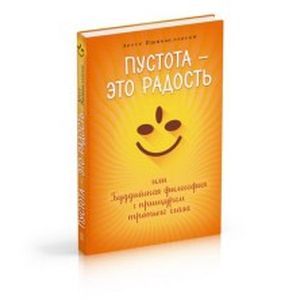Emptiness is joy, or Buddhist philosophy with a squint of the third eye
Please sign in so that we can notify you about a reply
In the book "emptiness - this is the joy" Polish professor, doctor of philosophy A. Pshibyslavsky sets out the most important concepts of Buddhist philosophy, making it available and easily, often in a joking form, using images and examples from modern life.
Let this book be an attempt to explain the joke behind which the experience of Buddhist philosophy is worth. The explanation, most likely, will seem somewhat tightened, with numerous retreats, but in justification I will say - they should turn out to be joking. Also, the explanation will contain most of the Buddhist philosophy, because it is she who turns into live experience with the help of meditation and becomes the best reason for joy.
In order to try to understand the joy formed by Buddhist philosophy and meditation, you need to look at the world around the world by the eye of Buddhist wisdom, this is the so-called third eye drawn vertically on the foreheads of the enlightened forms from Buddhist paintings. And this eye - I dare to say - it is definitely sore. He sees the void of things, and it in turn is nothing more than a joy. To determine it, the Tibetans use the term Deton, in which DE comes from the word Devea, meaning joy, and Tong - from Tongpanya, meaning emptiness. - Arthur Pshibissovsky
Let this book be an attempt to explain the joke behind which the experience of Buddhist philosophy is worth. The explanation, most likely, will seem somewhat tightened, with numerous retreats, but in justification I will say - they should turn out to be joking. Also, the explanation will contain most of the Buddhist philosophy, because it is she who turns into live experience with the help of meditation and becomes the best reason for joy.
In order to try to understand the joy formed by Buddhist philosophy and meditation, you need to look at the world around the world by the eye of Buddhist wisdom, this is the so-called third eye drawn vertically on the foreheads of the enlightened forms from Buddhist paintings. And this eye - I dare to say - it is definitely sore. He sees the void of things, and it in turn is nothing more than a joy. To determine it, the Tibetans use the term Deton, in which DE comes from the word Devea, meaning joy, and Tong - from Tongpanya, meaning emptiness. - Arthur Pshibissovsky
Author:
Author:Pshibyslavski A.
Cover:
Cover:Hard
Category:
- Category:Historical Literature
- Category:Toys & Skills development for kids
Series:
Series: Wheel time
ISBN:
ISBN:978-5-91994-061-6
No reviews found
